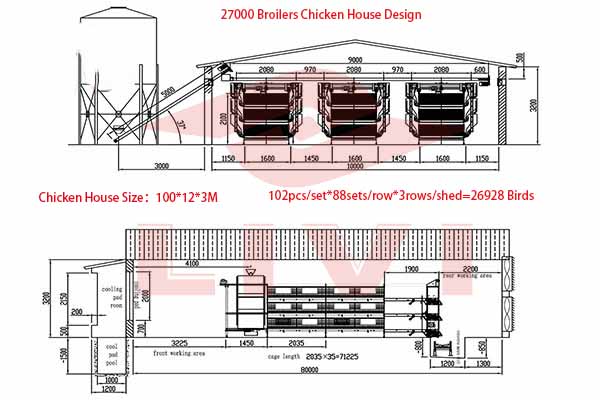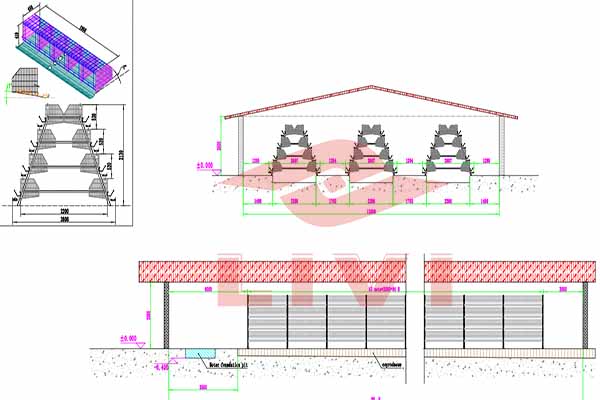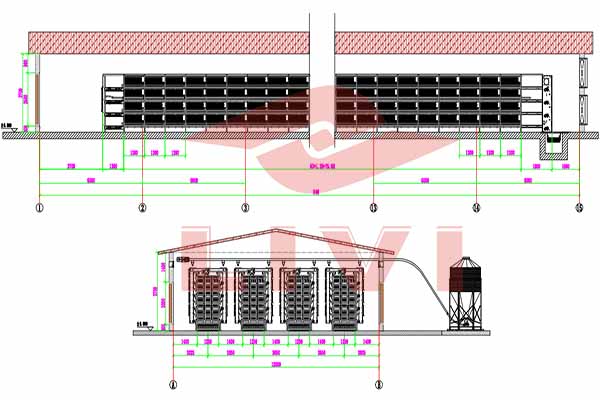Revolutionizing Poultry Farming in Tanzania: The Rise of Automated Equipment
Tanzania, a country known for its rich agricultural heritage, is witnessing a transformative shift in its poultry farming sector. The introduction of automated poultry equipment is not just a technological upgrade; it’s a revolution that promises to enhance productivity, ensure food security, and uplift the economic status of farmers. This article delves into the nuances of this technological wave, exploring its benefits, challenges, and the potential it holds for Tanzania’s agricultural landscape.
### The Need for Automation in Poultry Farming
Traditionally, poultry farming in Tanzania has been labor-intensive, relying heavily on manual processes. However, the growing demand for poultry products, coupled with the challenges of labor scarcity and the need for consistent quality, has necessitated a shift towards automation. Automated equipment offers a solution that is both efficient and scalable, addressing the limitations of conventional farming methods.
### Key Types of Automated Poultry Equipment
1. **Automatic Feeding Systems**: These systems ensure that birds receive the right amount of feed at regular intervals, reducing waste and improving feed conversion ratios.
2. **Climate Control Units**: Advanced climate control systems maintain optimal temperature and humidity levels, crucial for the health and growth of poultry.
3. **Egg Collection and Sorting Machines**: These machines automate the process of egg collection and sorting, minimizing breakage and ensuring hygienic handling.
4. **Automated Waste Management**: Efficient waste management systems help in maintaining clean environments, reducing the risk of diseases.
5. **Health Monitoring Devices**: Wearable technology and sensors monitor the health of birds in real-time, allowing for prompt interventions.
### Benefits of Automation
**1. Increased Productivity**: Automated systems can handle tasks more quickly and efficiently than manual labor, leading to higher production rates.
**2. Improved Quality Control**: Consistent processes ensure that the quality of poultry products meets international standards.
**3. Labor Efficiency**: Automation reduces the dependency on labor, addressing the issue of labor shortages and high labor costs.
**4. Enhanced Animal Welfare**: Automated systems can provide better living conditions for poultry, leading to healthier birds and better quality products.
**5. Data-Driven Decision Making**: The integration of IoT and AI in automated equipment provides valuable data, enabling farmers to make informed decisions.
### Challenges and Considerations
Despite the numerous benefits, the adoption of automated poultry equipment in Tanzania faces several challenges:
**1. Initial Investment Costs**: The high initial cost of automated systems can be a barrier for small-scale farmers.
**2. Technical Expertise**: There is a need for training and skill development to operate and maintain these advanced systems.
**3. Infrastructure Limitations**: Reliable power supply and internet connectivity are essential for the smooth operation of automated equipment, which can be a challenge in rural areas.
**4. Cultural Resistance**: Farmers accustomed to traditional methods may be resistant to change.
### The Future Outlook
The future of poultry farming in Tanzania looks promising with the integration of automated equipment. Government support, in the form of subsidies and training programs, can facilitate wider adoption. Collaborations with technology providers and agricultural institutions can further enhance the capabilities of local farmers.
### Case Study: A Success Story
One notable example is the XYZ Poultry Farm in Morogoro, which transitioned to automated systems in 2019. The farm witnessed a 40% increase in egg production and a significant reduction in labor costs. The success of XYZ Farm serves as a testament to the potential of automation in transforming the poultry sector.
### Conclusion
Automated poultry equipment is not just a technological advancement; it’s a catalyst for change in Tanzania’s agricultural narrative. By embracing these innovations, Tanzania can achieve sustainable growth in its poultry industry, ensuring food security and economic prosperity for its people. The journey towards automation is fraught with challenges, but the rewards are immense, making it a venture worth pursuing.




